Mexico City
Flying into Mexico City at night is like seeing planet Earth from a science fiction movie occurring 500 years in the future: all lit up and packed into geometric shapes, with population covering every available space. Modern globalism was instantly evident, too, when the first readable signs were neon Coca-Cola followed by the Golden Arches.
Karen had taken a crash course in Español prior to our trip, and I did some brushing up from my high school Spanish classes. So, we could say hi and count to ten. Fortunately, signage and international symbols are modern enough in Mexico City that we got around quite quickly after landing, and our guide books told us the best ways to get safe taxis.
Taxi robberies have become a problem in Mexico City over the past decade, with tourists being especially valuable targets. So, we headed for the yellow-sided taxis associated with sitio kiosks; all rather official and even prepaid before taking the trip (with fare based on the destination’s “zone”). Still no guarantees, especially at night in out of the way neighborhoods, but much better chances than the informal VW Bug taxis that generally have “non-working” meters (so that the driver can get a higher unofficial fare).
One thing to watch out for: a driver who feigns being lost. So, of course, our driver starts driving around in circles in neighborhoods with boarded up windows and prostitutes cruising the streets. Considering that our intended destination was right in the center of a well known tourist area, that was suspicious and I kept on the lookout for an accomplice jumping into the car at any stops (a usual modus operandi). However, the driver was quite honest, though a little befuddled, and we were let into the Hostel Catedral by the security guard through three layers of locked doors.
With no AC or fan, the sleeping was hot and sticky. Karen slept with her mattress on the floor of our “suite” so as to get some breezes from the door that led to the outside veranda which we had to leave open (and trust that no one would enter all night, even though there were outside access points from several directions).
The view from the veranda was quite good, looking out onto a square and the backside of the city’s famous Cathedral. Proximity to the heart of things meant being woken up by full military drums and bugles at 6 am. Since we didn’t get to bed until 2 am and I probably tossed and turned in the heat until 4 am, that was some local spice that we didn’t really need.
We started our first full day in Mexico with the traditional hostel crowd: lots of twenty-somethings and nationalities, especially Aussies, hanging out watching football (soccer) on the hostel’s TV. The included breakfast was soggy corn flakes and dry white toast. Scrumptious.
Our goal for the first day was to wander, and that we did. Zocalo is the heart of Mexico City, and has been for thousands of years. It’s the second largest public square in the world (Red Square in Russia is the largest), and it is surrounded by the grand facades of such buildings as the Catedral Metropolitana and Palacio Nacional, plus a continual throng of vendors, locals enjoying the day, political activists, Aztec dancers, musicians, kite flyers, and much more.
The vendors sell a wide and sometimes strange assortment of things: lots of the expected food, clothing, and trinkets, but also padlocks, books on Hitler, and hand-shaved ice put into a plastic bag and topped with juicy fruit pulp. Unlike markets in some other parts of the world, the vendors are not pushy. They will approach with a greeting and a wave of the hand over their goods, but a simple “no, gracias” will quiet every single one of them. I didn’t enjoy getting constantly asked if I was interested in goods for sale, but at least I came to know that each request was easily overcome. All minor battles could be won in the war of semi-solitude while perusing the markets.
The Palacio Nacional is a huge rectangular complex that spans a large city block or two. Foreigners need to leave a photo ID to get past the armed guards, who will return it upon exiting again.
The Palacio is located on the site of where there have been many castles and residences over the centuries, including those of Aztec emperors, Hernan Cortes, and more recent Mexican presidents. The current instantiation has been around for centuries, and is used primarily for governmental purposes. Inside, we could see formal greeting halls, an interesting mural by Diego Rivera depicting the changes in Mexico over the past couple millennia, and a botanical garden that had a particularly interesting scope and diversity devoted entirely to cacti.
Moving on to the Catedral Metropolitana (Metropolitan Cathedral), we first accidentally went into the adjacent Sagraria, a smaller church which would dwarf most anything comparable in the United States. Then, after entering through the 40 foot tall wooden doors into the main Catedral, we saw what all the fuss was about.
The cathedral is the largest in the western hemisphere, consisting of 14 side chapels, 5 naves, a central choir, sacristy, and many other parts. The ornamentation is impressive, whether your opinion of it leans toward high beauty or ostentatious gaudiness. Art, fine woodworking, sculpture, architecture, and sheer scale all blend together in a highly detailed, if not particularly subtle, expression of church values for the locals and world to see. This is best put into perspective with a simple fact: it took 240 years for the cathedral to be built (1573-1813)!
Karen was approached by an unofficial guide named Martin. I tend to be suspicious of such advances, but Karen was open to it, and thankfully so. Martin was an ex-English teacher, teacher of English to business executives, and someone who enjoyed research and learning. This was exhibited by his strong English and his command of the historical subject matter. It wasn’t all canned either, since he was ready to answer most every question that we threw his way. For about $30 US, we got a several hour personalized tour of both the Catedral and the accompanying Museo de Templo Mayor.
The Templo Mayor was a primary temple in Aztec times that stood where the Zocalo is now located. Over two thousand years ago, Mexico City was essentially a man-made island in the middle of a large lake. The militaristic Aztecs used it as a central base from which they exerted dominance over surrounding tribes. Roads into the city were actually built up of dirt, tree limbs, and rocks made to form bridges across the shallow lake. Eventually, after the fall of the Aztecs and the rise of Spanish rule, the lake was drained and replaced by a land-based city.
The cathedral now tilts at very noticeable angles as a result of this land’s history, since the underlying soil is very soft plus it is continually undermined by the flow of a spring. Extensive efforts at saving the building have been ongoing over the past century. The most recent excavations under the cathedral seem to have produced the best results; not too long ago one side of the building had sunk 8 feet lower than the other, but it is moving back toward a level equilibrium using the same techniques with which engineers have saved the Leaning Tower of Pisa in Italy.
The underlying rock structures of many local historic buildings were actually built from the rubble of the Templo Mayor. In fact, the Spanish specifically destroyed the temple and erected a huge cathedral in its place to proclaim its domination and to make the assumption of Christianity very evident for the local population and the world to see.
Teotihuacan
Seeing the semi-intact famous ruins of Mexico was a priority for this trip, so we took the fast and efficient Metro subways to Terminal Norte for a bus to Teotihuacan. The Metro is crowded and bustling, but it is well marked and easy to navigate even without knowing much Spanish. Most people recommend one thing in particular, though: watch your bags.
The bus ride took us about 32 miles northeast of downtown Mexico City, past hillsides full of drab gray concrete block homes, billboards all over, and eventually through farmland. Upon approaching the ancient city of Teotihuacan, the enormous pyramidal Temple of the Sun rises above everything else in the valley.
Teotihuacan was built and expanded over time across a 20 square kilometer area, which was entirely covered by a concrete-like white surface and massive temples, homes, avenues, and marketplaces. On the perimeter, the lower classes lived and worked, while the rulers, priests, engineers, artisans, doctors, and such lived nearest to the center where the main temples rose high above everyone’s daily lives.
Upon entering the government owned grounds, we looked for the free guides but none were around. Karen was approached yet again by another unofficial guide, Victor, and we decided to pay him to guide us through the couple mile long main areas. Good thing, since he added a lot of background and flavor that we would not otherwise have learned.
The main Calzada de los Muertos (Avenue of the Dead) stretches out in a straight line for a couple miles, with the huge Piramide del Sol (Pyramid of the Sun) flanking off to the right and the smaller Piramide de la Luna (Pyramid of the Moon) in the distance at the end of the Avenue. Along the entire length are partially reconstructed stairs, platforms, buildings, and open plazas. To the sides are dirt hills scattered about; all contain the remnants of temples and artifacts yet to be excavated.
The original temples long ago were impressive structures with sloping sides and steep stairs leading up to rectangular temples on top. They were painted in vibrant reds, greens, blues, yellows, and whites, all from local plants that Victor showed to us. Brutal human sacrifices were a central part of their culture, religious beliefs, and seasonal traditions, and they were performed on top of the temples. Even the priests would draw blood from their own bodies, since blood and ripping out live beating hearts from sacrificial victims were de rigueur.
The main Citadel was Karen’s favorite location in Teotihuacan. Though less famous than the pyramids, they have original serpent head sculptures and ornate carvings in solid rock that line the perimeters there, and that makes it much more interesting – when close up – than the huge but currently undetailed pyramids.
The pyramids provide impressive views down along the Avenue of the Dead. Most people ascend to the top of the Pyramid of the Sun and fewer to the Pyramid of the Moon, but the Pyramid of the Moon has a far more impressive view that really brings out the possibilities and feel of the ancient culture and city. Looking south down the length of the Avenue, one can easily imagine people moving about, selling their wares, performing services, and running a civilization that may have rivaled ancient Rome in many ways.
Guanajuato
Guanajuato is a must see for visitors to the middle part of Mexico. It’s a wonderful walking town that is built into steep rock hillsides and meanders through centuries of picturesque cathedrals, brightly painted houses, ornate wooden doors, and a vibrant market and restaurant scene. It’s a UNESCO World Heritage site for good reason.
To get there form Mexico City, we took a bus. Much less expensive and easier than a plane, and actually very comfortable if you get a first class or executive class bus. We paid the extra $6 each to get the executive class bus, which has large comfortable reclining seats, clean restroom, reading lights, window shades, air conditioning, and even videos playing on TV monitors with headphones for sound. The first class busses are supposedly rather nice, too, though they have less seating room and fewer amenities. Economy class busses are frequently the hot, rattling school bus style modes of transportation which are cheap for a reason, but still get you there nonetheless (if they don’t break down or get robbed on the highways, which sometimes happens).
The town of Guanajuato was built within its steep valley when large gold and silver deposits were found there in 1559. Since then, the town has gradually expanded, but practically all of its central core is still original and authentic. Trying to drive through the winding, tight streets would be either foolhardy or unnecessarily tense for an outsider, and all of the interesting nooks and crannies are only accessible by small walking alleys connected by steep stairways. It sometimes feels like walking through an urban slot canyon.
Guanajuato was the location of a very famous original call for Mexican independence from Spain by priest and rebel leader Miguel Hidalgo. The locals are proud of their history, and it’s evident by how they have stayed true to the historical feel of the city while also performing restoration work within the cathedrals and sometimes crumbling buildings. To retain the original architecture and reduce the appearance of cars, an extensive network of rock cavern roadways have been built under the city. Though they are smog choked inside, they provide a fun experience reminiscent of entering a ride at Disney World.
We explored local churches, all of which are always open to the public even though they have solid gold ornamentation and no guards. Gaudily ornate local theaters were interesting, as was a museum dedicated to Diego Rivera (who was born there). An evening tram ride to the Papila Monument above the city led us to a beautiful multicolored scene over the entire city as the Sun set below the surrounding scrub-covered mountains.
The funnest parts of the city were experienced while just plain wandering, admiring the architecture and colors, and watching the very alive scene of local residents out and about. People of all generations gathered to talk and dance to live music in the central square in the evenings, and street vendors hawked a wide variety of colorful fruits, drinks, meats, and toys. Mariachi bands roamed restaurants, and young couples hugged while sitting on ancient stone steps.
I was already far into experiencing some unfortunate food poisoning and fever, which made the walking around rather lethargic, but the sights and sounds of the city always made up for it.
Jose Cuervo in Tequila
After another comfortable bus ride from Guanajuato to Guadalajara, the next day we met part of my sister-in-law Monica’s family for the first time. All were very friendly and welcoming people, and those who knew some English took pity on the less multi-language-educated gringos and spoke with us in English. However, Karen and I always made attempts to speak at least some phrases and learn new words in Español, and the effort was noticeably appreciated.
Monica’s Uncle Jorge, a gregarious and humorous man who was a joy to be around, had connections with the Director of Marketing at the Jose Cuervo plantation and distillery, and he arranged a great personalized tour for us. Tours are available to the general public, but Jorge got us into areas reserved for only the owners and friends of the owners, which made the experience particularly special.
Our bus took us to the blue agave fields for a demonstration of how agave is planted, grown, pruned, chopped, and harvested over the 7-8 years that the plant is grown. A local celebrity of sorts – he’s essentially the equivalent of what Juan Valdez was to advertising coffee – gave us the demonstration with his continually sharpened machetes and other tools. A Jose Cuervo marketing lady did the talking and Monica did the interpreting for the gringos. I swung the machete around a few times to cut some agave. It was very educational, and was especially interesting to compare similarities and differences with the sugar cane plantation practices that we learned about last year in Kauai. The sugar cane plantation factories were larger operations and had an industrial feel that was much dirtier and decrepit than the operations here.
Jose Cuervo is located in the actual town of Tequila, and true tequila is mandated by law (and for quality control reasons) to only be from particular neighboring regions there in Mexico. Somewhat like true champagne, which only comes from a particular region of France. The company is 208 years old, and still resides on the same grounds and uses many of the same manual labor practices of hundreds of years ago. Trucks and better controlled factory conditions exist now, but the processes are essentially the same, just refined here and there.
The clean, well organized factory was next on our tour. Huge 100 year old ovens with 3 foot thick adobe walls lined the front of the factory, where the piña (heart of the agave plant, named after the Spanish word for “pineapple” since it looks like one) gets cooked so that the starches turn to sugar. We tasted the raw cooked agave, which tasted like molasses. In visual opposition to the old world feel and dented copper vats were modern chrome and aluminum ductwork, all giving it somewhat of a dissonance but also a feeling that the tequila was safe to drink!
The grounds had a demonstration area showing how tequila was produced by mules and grind stones over a century ago, and there was also an unusual museum of fancy horse saddles (many of which would likely be at least $30,000 – $50,000 to make today) plus rows and rows of different spur designs.
Then the special part of the tour started, the part that Uncle Jorge pulled some strings to get us into the special areas not open to the public. We walked down stairs into the earth and came into a cavernous crypt-like area with arched stonework ceilings and rough hewn rock walls. In the corners were glass barrels of tequila over 100 years old, settled under thick dust with not a single finger print on them. Only the family and friends of family get to taste from these barrels or come into this area, but we got to do both! I honestly could not tell the difference between the old stuff and the newer stuff, but I’m not (yet!) a connoisseur of fine tequila.
Our special tour then continued into the private gardens of the family that owns Jose Cuervo. It was very park like, though denser than most parks with the variety of plants, fountains springing water into the air, gazebos, and sculptures depicting various phases of the production of tequila.
A wonderful multi-course meal followed at the family’s hacienda, where we were also fed a constant stream of tequila-based margaritas of more varieties and flavors than I had ever had before. My favorite was a red colored margarita that derived its sweetness from the petals of a particular local flower. A wonderful way to spend a hot afternoon in the shade of the hacienda…
Historic Guadalajara
After meeting more of the family for a well done pre-wedding day brunch, we took off with some American friends of my brother-in-law Jim to explore the historic central areas of Guadalajara.
Guadalajara has a much more modernized and commercialized feel than the dingier historic areas around Zocalo in Mexico City, and is extremely different from the quaint roughness of Guanajuato. Centuries-old cathedrals stand beside modern glass and concrete office buildings, and the stores have more of a franchised chain feel to them. However, the buildings and marketplaces are still enjoyable and very much worth investigating.
We walked the streets and squares of the city’s central area, rummaging through unusual jewelry, musical instruments, and bootlegged CDs. At night, the peddlers went away but the local people came out for street performers and cold drinks with friends.
Cathedrals, museums, and government buildings beckoned, and we investigated them all. A massive old orphanage was particularly interesting, having now been turned into a maze-like modern art museum containing artwork that contrasted strongly with the socialist murals on its original high ceilings and the solid rock architecture. Like the rest of the city, a place of contrasts.
Wedding Day
The big day arrived for Jim and Monica, and what a doozie of a wedding they had. Definitely the funnest one we had ever participated in. It reminded me a lot of the film “My Big Fat Greek Wedding”: Conservative white gringos from up north getting together with very outgoing and fun loving family from a different culture. By the end of the reception, all the gringos were liquored up on tequila, singing Spanish songs that they didn’t know the words to, throwing people up into the air, dancing and dancing and dancing, eating lots, telling dirty jokes, and enjoying the heck out of themselves.
The wedding was pretty, in a very old Catholic church with lots of ornamentation, paintings, and detail. Afterwards, everyone drove to the well maintained grounds of a private setting on the outskirts of Guadalajara in the small rural town of Zapopan. Drinks started flowing immediately, all the pictures started happening, and then people started getting into the spirit of things.
Jim had his faced smashed directly into the wedding cake by Monica; a shocked Jim then grabbed a fistful of cake and ran after Monica (who is surprisingly speedy in a full length wedding dress!) until the food fight ended in a pile on the ground. Karen and I gave a little swing dance demonstration to bring some of our culture along for the show. The mariachi band got all the men up to pour their hearts out singing unintelligible Mexican songs to all the ladies in the audience. People were pulled into funky dances, willingly or not, and the whole mood of the place was very relaxed and free spirited.
Definitely a great start for Jim and Monica, and a hoot and holler for everyone else!
Tonala
On our last full day in Mexico, we started out at the massive famed street markets in Tonala, located southeast of Guadalajara. Tonala is where many artisans reside, and you can buy things there for a third of the price that you will find the same stuff in trendier shops and locations elsewhere. It’s “direct from the manufacturer”, so to speak.
The market lines both sides of a very long street that we never got to see the end of while we were there, and the stalls are crammed together so close that walking is just a constant barrage of jostling and strategically fitting yourself in between other people. I’m not a shopper by any means, but I actually enjoyed this place. And I found a bunch of things that I would have really liked to have purchased had it not been for the issue of shipping it all back home: very interesting rough hewn furniture, chairs with integrated glass in their backs, paintings, clothes, a whole bunch of things. Much to my chagrin, they even had ceramic Sponge Bob Square Pants coin banks; we moved on quickly from there.
Karen and I spent most of our time in a shop that had high quality ceramics with interesting hand painted designs. We walked out with a matched set of bowls, mugs, and plates with a Sol/Luna (Sun/Moon) theme. Most of our time was devoted to putting together an intricate mosaic of hand painted three dimensional tiles that had nature themes on them. We arranged them into a pattern on the shop floor; this will someday soon form the surface of a table top with a great trip story behind it.
We ended the day at the grounds of Uncle Jorge’s condominium complex, hanging out with family and friends, getting in some final chatting before we all scattered to the winds. Everyone exchanged hugs and kisses, extended welcome mats to others across Mexico and the US, and it wound down to everyone’s departure. Karen, Mary, Jim, Monica, and I capped the day with a local favorite bakery known for its pies, and we got a whole apple pie to share between us before parting ways. A little segue back to the US of A, I suppose…

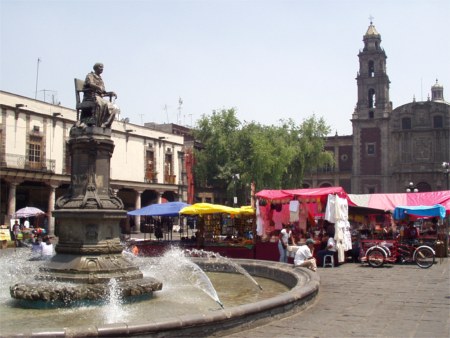

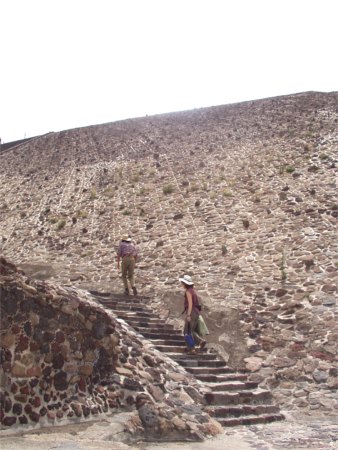
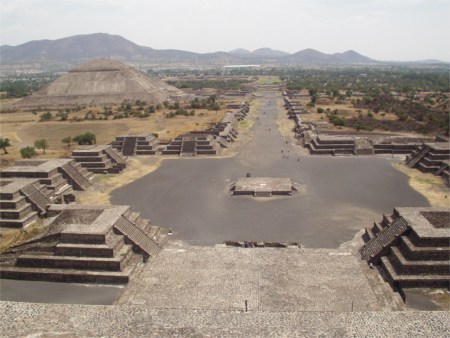



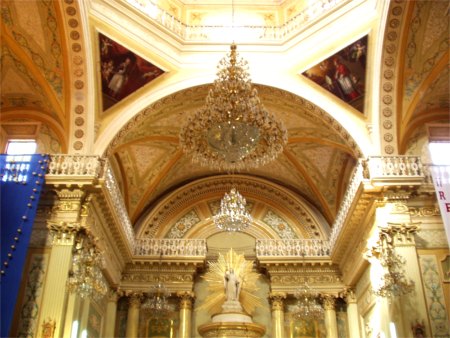
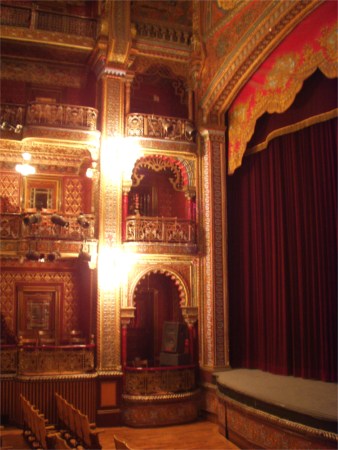
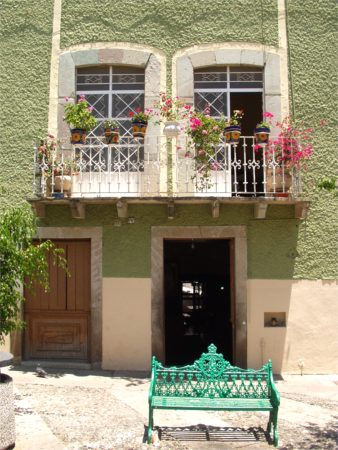

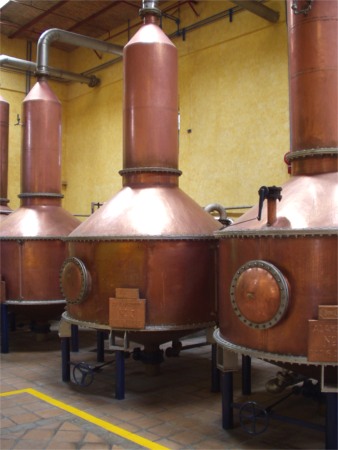
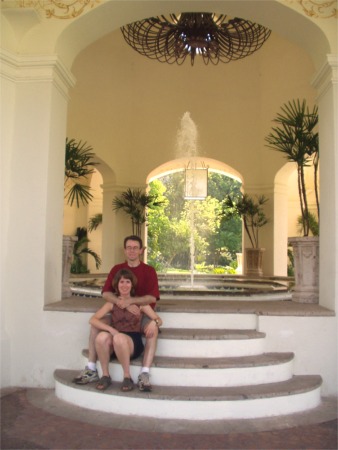
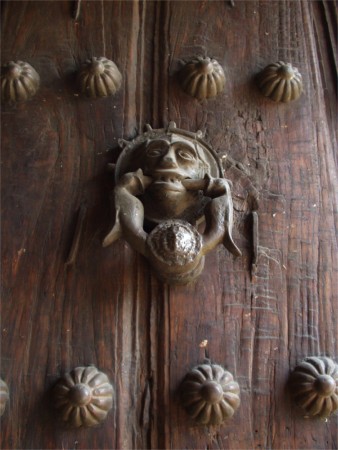
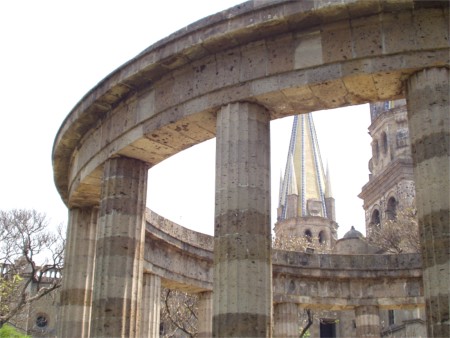
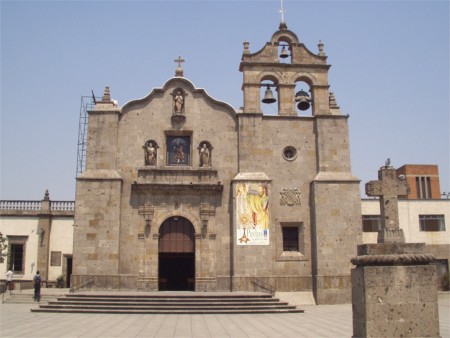
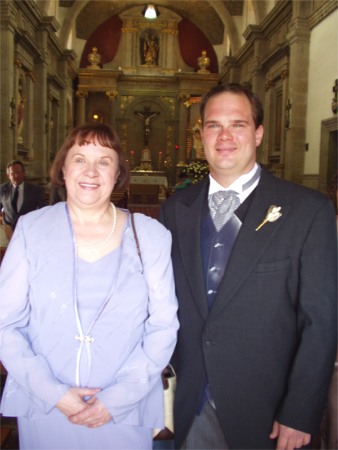

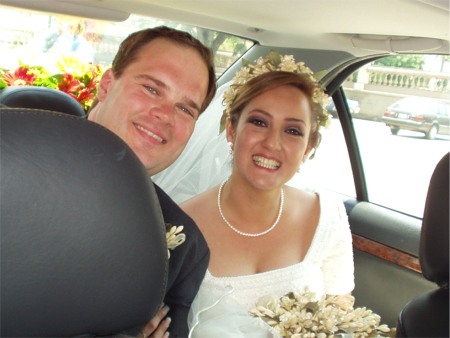
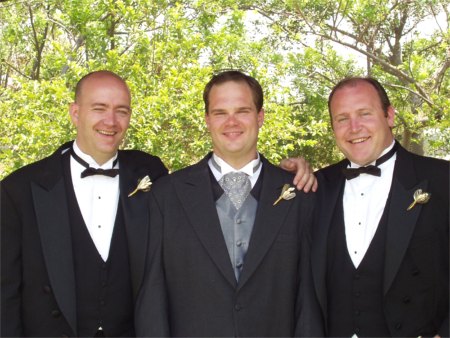
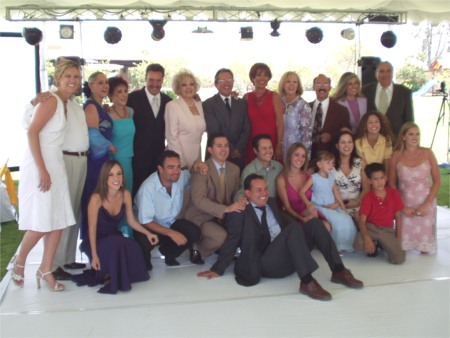
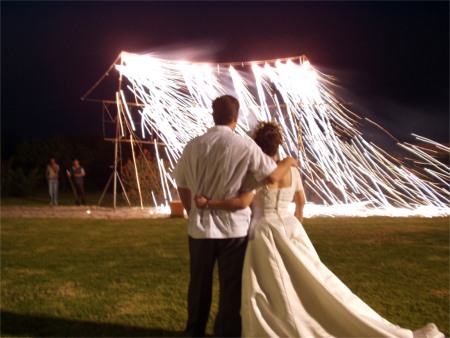
Leave A Comment